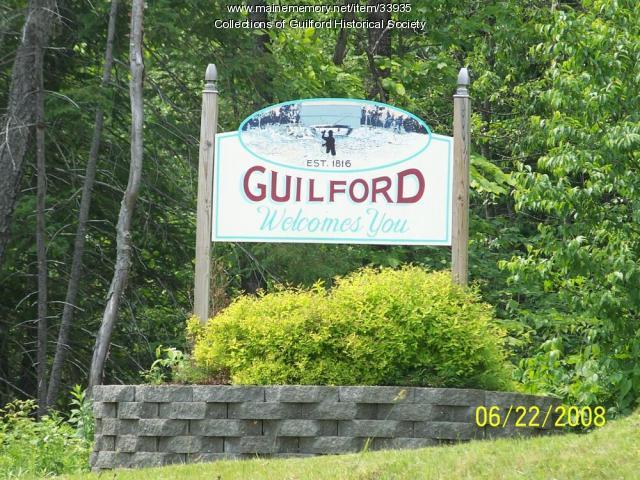Keywords: Businessmen
Item 35450
Jacob C. Pike, with area businessmen, Lubec, ca. 1885
Contributed by: Lubec Historical Society Date: circa 1885 Location: Lubec Media: Photographic print
Item 102856
Businessmen at the Cumberland Shipyard, South Portland, ca. 1918
![]() Do you recognize any of these men?
Do you recognize any of these men?
Contributed by: Maine Historical Society Date: circa 1918 Location: South Portland Media: Photographic print
Exhibit
Maine's first governor, William King, was arguably the most influential figure in Maine's achieving statehood in 1820. Although he served just one year as the Governor of Maine, he was instrumental in establishing the new state's constitution and setting up its governmental infrastructure.
Exhibit
Passamaquoddy Indians from Washington County traveled to Portland in 1920 to take part in the Maine Centennial Exposition. They set up an "Indian Village" at Deering Oaks Park.
Site Page
"… farmers, and land holders, through merchants and businessmen, to the soldiers and heroes who lived and died here, and of the sacrifices of sweat…"
Site Page
Thomaston: The Town that Went to Sea - Notable Residents
"1960Thomaston Historical Society Many local businessmen and lawyers gained state and national recognition."
Story
Alex Mouzas: Passionate about sharing his Greek-American roots
by Biddeford Cultural & Heritage Center
A personal, in-depth look into the life and contributions of area Greek-Americans
Story
A Note from a Maine-American
by William Dow Turner
With 7 generations before statehood, and 5 generations since, Maine DNA carries on.
Lesson Plan
Longfellow Studies: "The Jewish Cemetery at Newport"
Grade Level: 6-8, 9-12
Content Area: English Language Arts, Social Studies
Longfellow's poem "The Jewish Cemetery at Newport" opens up the issue of the earliest history of the Jews in America, and the significant roles they played as businessmen and later benefactors to the greater community. The history of the building itself is notable in terms of early American architecture, its having been designed, apparently gratis, by the most noted architect of the day. Furthermore, the poem traces the history of Newport as kind of a microcosm of New England commercial cities before the industrialization boom. For almost any age student the poem could be used to open up interest in local cemeteries, which are almost always a wealth of curiousities and history. Longfellow and his friends enjoyed exploring cemeteries, and today our little local cemeteries can be used to teach little local histories and parts of the big picture as well.
Henry Wadsworth Longfellow visited the Jewish cemetery in Newport, RI on July 9, 1852. His popular poem about the site, published two years later, was certainly a sympathetic portrayal of the place and its people. In addition to Victorian romantic musings about the "Hebrews in their graves," Longfellow includes in this poem references to the historic persecution of the Jews, as well as very specific references to their religious practices.
Since the cemetery and the nearby synagogue were restored and protected with an infusion of funding just a couple years after Longfellow's visit, and later a congregation again assembled, his gloomy predictions about the place proved false (never mind the conclusion of the poem, "And the dead nations never rise again!"). Nevertheless, it is a fascinating poem, and an interesting window into the history of the nation's oldest extant synagogue.













